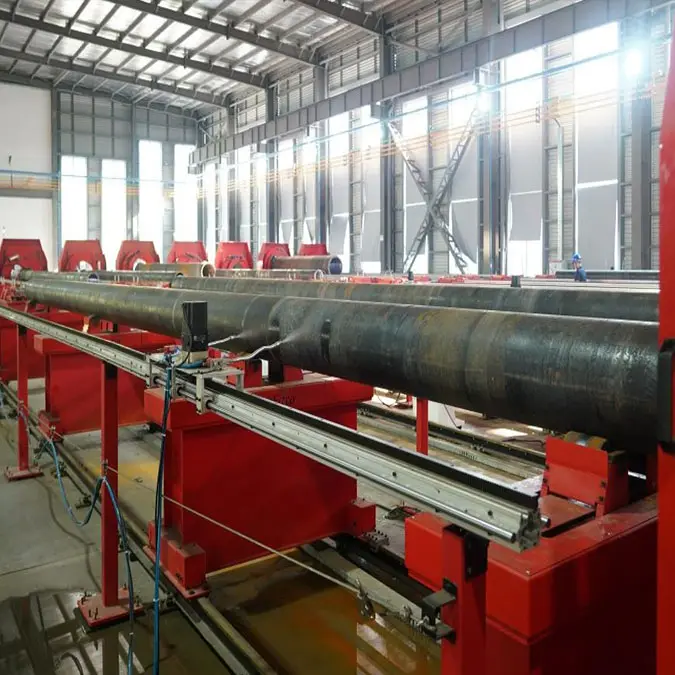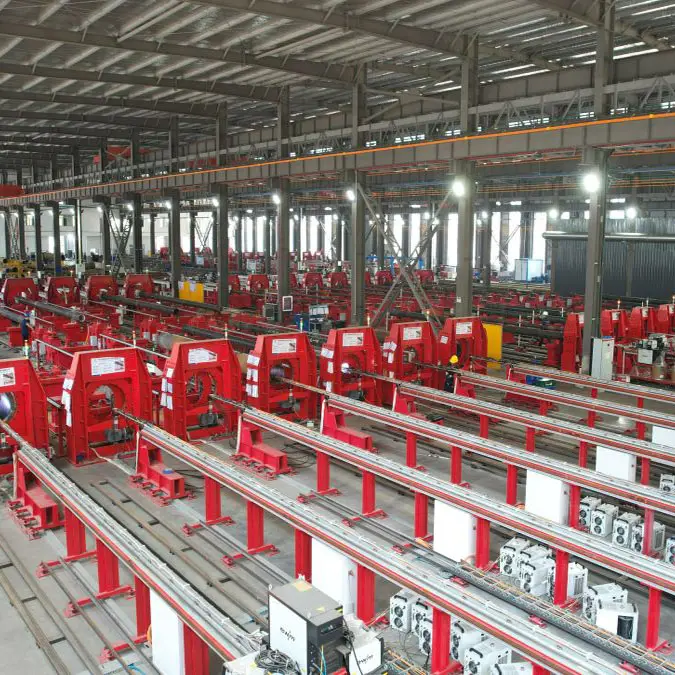Enhancing Surface Durability in Modern Industrial Pipelines
In many industrial sectors today, pipeline systems must not only transport materials efficiently but also withstand extreme conditions such as corrosion, high pressure, and heat. To address these challenges, industries are increasingly turning to a Pipe Cladding Station. This specialized equipment allows for the application of protective cladding layers onto pipe surfaces, dramatically improving their lifespan and performance. By integrating cladding processes into manufacturing lines, facilities enhance reliability, minimize repair costs, and streamline productivity.
Core Functionality of a Pipe Cladding Station
Surface Enhancement Through Metallurgical Bonding
A Pipe Cladding Station is engineered to metallurgically bond a corrosion-resistant alloy onto the surface of a base pipe. This is usually done through methods like TIG (Tungsten Inert Gas) welding or laser cladding. These techniques ensure that the cladded layer integrates well with the parent metal, creating a surface that resists corrosion, wear, and chemical attacks.
Integration with Automated Welding Systems
Modern Pipe Cladding Station setups are often automated, enabling consistent quality across long production runs. These stations may be equipped with robotic arms, adjustable rotation controls, and precision wire feeders. Automation not only ensures repeatability but also reduces human error, which is critical when working on high-specification pipelines.

Key Benefits of Using a Pipe Cladding Station
Boosting Service Life of Pipelines
By cladding pipes with specialized materials such as Inconel, stainless steel, or nickel alloys, industries can significantly increase the longevity of their pipeline systems. This is particularly beneficial in sectors like petrochemicals, offshore drilling, and thermal power, where pipes are exposed to harsh environments.
Minimizing Downtime and Maintenance
A Pipe Cladding Station helps reduce pipeline failure due to corrosion or abrasion. With enhanced surface properties, cladded pipes require fewer inspections and repairs, translating into reduced downtime and better resource allocation. Over the long term, this contributes to more stable operations and cost savings.
Application Areas and Industry Relevance
Oil and Gas Industry
The oil and gas sector deals with aggressive chemicals and high-pressure environments. A Pipe Cladding Station enables the manufacturing of components that can withstand these tough conditions. Cladded pipes are commonly used in refineries, offshore rigs, and downhole applications.
Power Generation Facilities
Pipes in thermal and nuclear power plants are subject to extreme heat and pressure. Using a Pipe Cladding Station ensures these pipes have a protective layer that reduces thermal fatigue and material degradation, leading to higher plant safety and efficiency.
Technological Features of Advanced Pipe Cladding Stations
Real-Time Monitoring Systems
Advanced Pipe Cladding Station models feature real-time data monitoring for temperature, deposition rate, and welding speed. These parameters help operators maintain precise control over the cladding process, improving consistency and reducing the chances of defect formation.
Multi-Material Compatibility
Modern cladding stations can work with a wide range of materials, from carbon steel bases to high-performance alloy cladding wires. This versatility allows users to tailor surface properties for specific project needs without needing separate setups.
Optimizing Process Efficiency Through Cladding
Reducing Material Waste
Pipe cladding allows the use of less expensive base materials with only the surface requiring premium alloys. A Pipe Cladding Station ensures precise application, thus minimizing the use of costly cladding materials and reducing waste.
Improving Workflow Integration
The inclusion of a Pipe Cladding Station in a production line improves overall workflow efficiency. It reduces manual handling, speeds up processing times, and creates a seamless transition from raw pipe to finished product, contributing to lean manufacturing goals.
Cost Considerations and Return on Investment
Lower Long-Term Costs
While investing in a Pipe Cladding Station may seem costly initially, the long-term savings from reduced maintenance, increased lifespan, and fewer replacements more than justify the expense. Many manufacturers report a positive ROI within a few years of implementation.
Customized Solutions for Specific Needs
Many equipment suppliers offer Pipe Cladding Station configurations tailored to individual operational requirements. Whether it’s for pipe diameter, material type, or welding speed, customization ensures optimal performance and value.
Enhancing Worker Safety and Process Reliability
Reduced Exposure to Hazardous Environments
Automated Pipe Cladding Station systems help keep workers away from high-temperature and high-voltage zones, reducing the risk of injury. Operators can monitor and control processes from safe distances using remote panels or integrated software.
Consistent Quality Across Batches
Automation and monitoring technologies allow for highly consistent results. Each pipe receives the same level of surface treatment, ensuring uniformity and high-quality outputs that comply with stringent industry standards.
Future Outlook for Pipe Cladding Technologies
Growing Demand in Emerging Markets
With the rapid industrialization of regions in Asia, Africa, and South America, the demand for durable pipeline infrastructure is growing. Pipe Cladding Station technology is expected to play a vital role in supporting these development projects.
Integration with AI and IoT
Next-generation Pipe Cladding Station systems are likely to include AI-driven analytics and IoT connectivity. These features will help predict maintenance schedules, optimize cladding parameters, and integrate with other smart manufacturing systems.
FAQ
What types of cladding materials are used in a Pipe Cladding Station?
Common cladding materials include stainless steel, Inconel, Hastelloy, and other corrosion-resistant alloys. The selection depends on the application environment and required performance.
Can a Pipe Cladding Station handle different pipe diameters?
Yes, most modern stations are designed to accommodate a range of pipe sizes. Adjustable fixtures and automated controls make it easy to switch between diameters with minimal setup time.
Is cladding better than using solid alloy pipes?
In many cases, yes. Cladding combines the cost-effectiveness of a base metal with the superior surface properties of an alloy, offering a balanced solution for performance and budget.
How does a Pipe Cladding Station contribute to sustainability?
By extending the life of pipes and reducing the need for frequent replacements, cladding minimizes waste and conserves resources. Additionally, efficient material use in the process supports sustainable manufacturing practices.
Table of Contents
- Enhancing Surface Durability in Modern Industrial Pipelines
- Core Functionality of a Pipe Cladding Station
- Key Benefits of Using a Pipe Cladding Station
- Application Areas and Industry Relevance
- Technological Features of Advanced Pipe Cladding Stations
- Optimizing Process Efficiency Through Cladding
- Cost Considerations and Return on Investment
- Enhancing Worker Safety and Process Reliability
- Future Outlook for Pipe Cladding Technologies
- FAQ

 EN
EN
 AR
AR BG
BG HR
HR CS
CS DA
DA NL
NL FI
FI FR
FR DE
DE EL
EL HI
HI IT
IT JA
JA KO
KO NO
NO PL
PL PT
PT RO
RO RU
RU ES
ES SV
SV TL
TL IW
IW ID
ID LT
LT UK
UK SQ
SQ HU
HU TH
TH TR
TR FA
FA AF
AF CY
CY MK
MK LA
LA MN
MN KK
KK UZ
UZ KY
KY